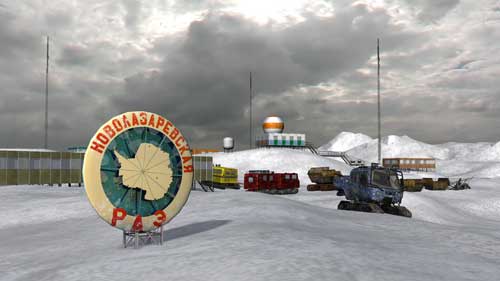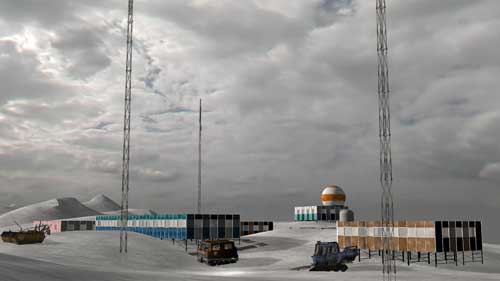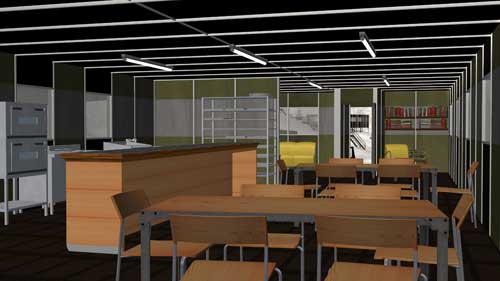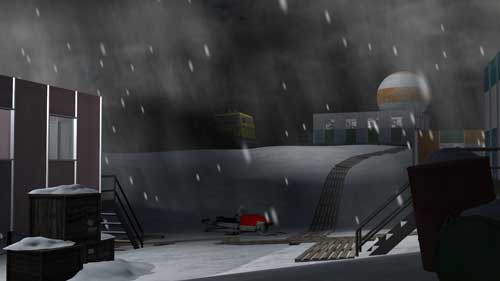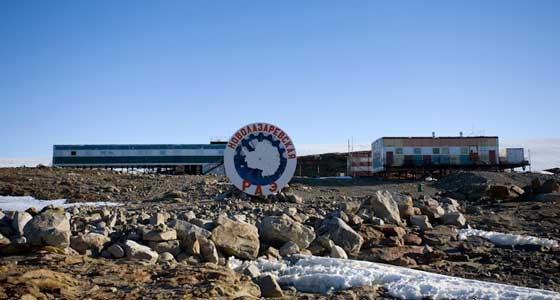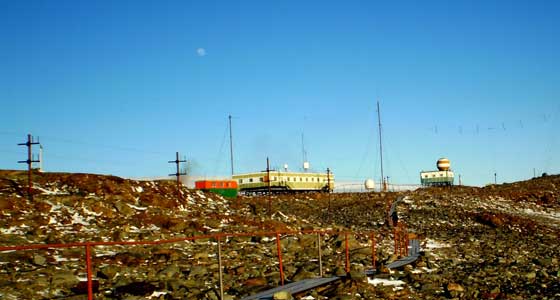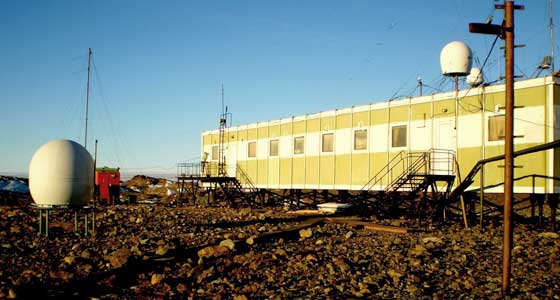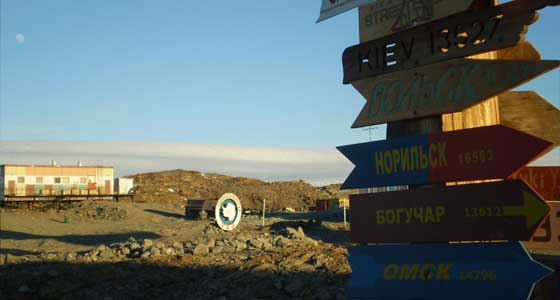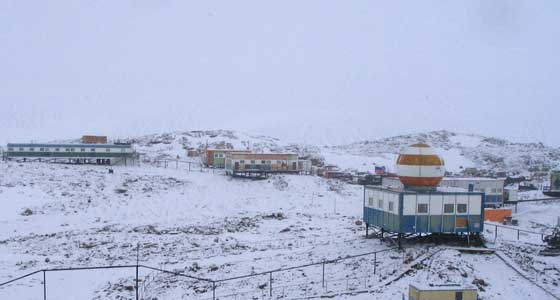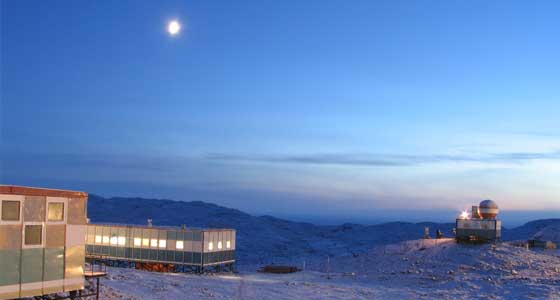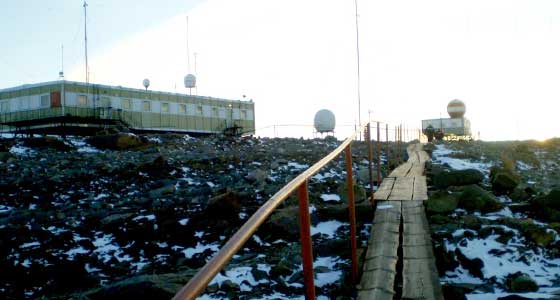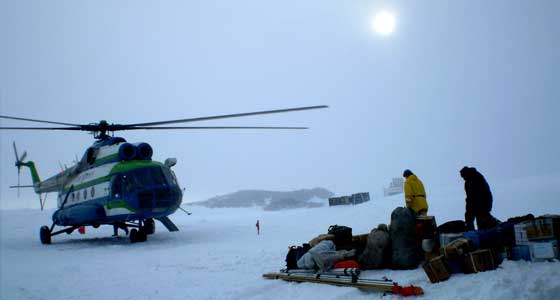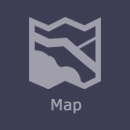


archives Episode 3 locations and facts...

Novolazarevskaya Station (Russian: ??????? ???????????????) is a Russian, formerly Soviet, Antarctic research station. The station is located at Schirmacher Oasis, Queen Maud Land, 75 km from the Antarctic coast, from which it is separated by Lazarev Ice Shelf. It was opened on January 18, 1961 by the 6th Soviet Antarctic Expedition. The maximum summer population is 70.
Novolazarevskaya has an airstrip that serves both research-related and commercial flights. In 2010 GLONASS differential reference station started to work in Novolazarevskaya. The reference station also provides Internet to Novolazarevskaya personnel. (Source:Wikipedia)
Strategically situated and permanent inhabited, is one of the best options to disembark in the Antarctic continent when coming from South Africa.
A lot of expeditions, use this Russian base as a kind of transit scale before to continue its travel going inland into the continent or to other permanent bases as the international Amudsen-Scott situated in the heart of the South Pole.
Novolazarevskaya has an airstrip that serves both research-related and commercial flights. In 2010 GLONASS differential reference station started to work in Novolazarevskaya. The reference station also provides Internet to Novolazarevskaya personnel. (Source:Wikipedia)
Strategically situated and permanent inhabited, is one of the best options to disembark in the Antarctic continent when coming from South Africa.
A lot of expeditions, use this Russian base as a kind of transit scale before to continue its travel going inland into the continent or to other permanent bases as the international Amudsen-Scott situated in the heart of the South Pole.
novolazarevskaya antarctic station

GLONASS: (Russian: ???????, ?????????? ????????????? ??????????? ???????), acronym for "Globalnaya navigatsionnaya sputnikovaya sistema" or "Global Navigation Satellite System", is a space-based satellite navigation system operated by the Russian Aerospace Defence Forces. It provides an alternative to Global Positioning System (GPS) and is the second alternative navigational system in operation with global coverage and of comparable precision.
Development of GLONASS began in the Soviet Union in 1976. Beginning on 12 October 1982, numerous rocket launches added satellites to the system until the constellation was completed in 1995. After a decline in capacity during the late 1990s, in 2001, under Vladimir Putin's presidency, the restoration of the system was made a top government priority and funding was substantially increased. GLONASS is the most expensive program of the Russian Federal Space Agency, consuming a third of its budget in 2010.
By 2010, GLONASS had achieved 100% coverage of Russia's territory and in October 2011, the full orbital constellation of 24 satellites was restored, enabling full global coverage. The GLONASS satellites' designs have undergone several upgrades, with the latest version being GLONASS-K. (Source:Wikipedia)
Development of GLONASS began in the Soviet Union in 1976. Beginning on 12 October 1982, numerous rocket launches added satellites to the system until the constellation was completed in 1995. After a decline in capacity during the late 1990s, in 2001, under Vladimir Putin's presidency, the restoration of the system was made a top government priority and funding was substantially increased. GLONASS is the most expensive program of the Russian Federal Space Agency, consuming a third of its budget in 2010.
By 2010, GLONASS had achieved 100% coverage of Russia's territory and in October 2011, the full orbital constellation of 24 satellites was restored, enabling full global coverage. The GLONASS satellites' designs have undergone several upgrades, with the latest version being GLONASS-K. (Source:Wikipedia)
real images of the novolazarevskaya base
Cape Town (Sudafrica)
Novolazarevskaya Base
Use the keyboard arrow keys or the mouse wheel to scroll the page horizontally


go left end





















